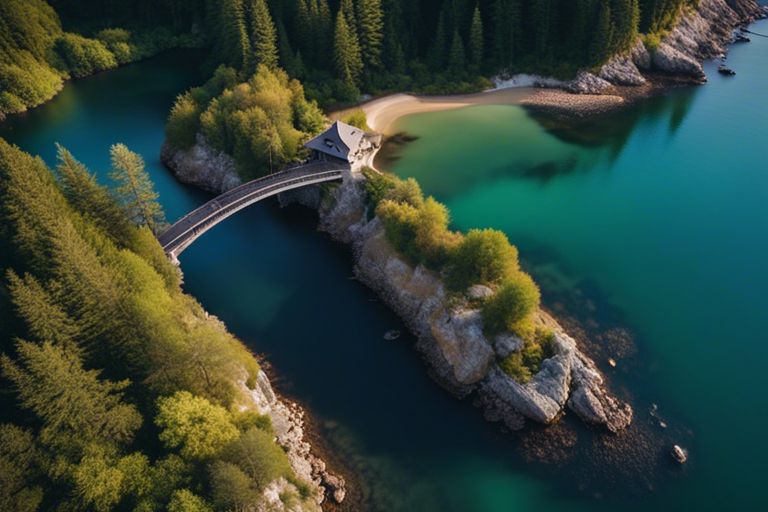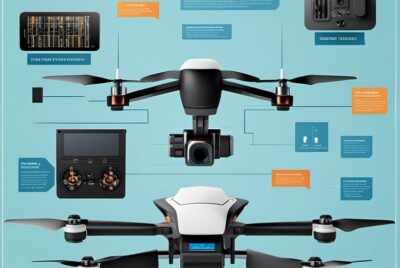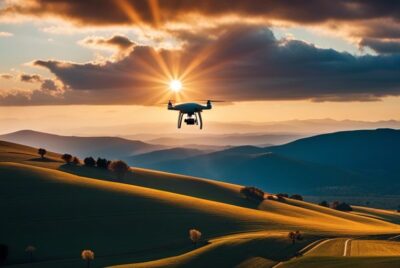“ND Filters Unveiled – Enhancing Your Drone Cinematography”
This comprehensive guide will explore into the world of ND filters and how they can significantly elevate the quality of your aerial cinematography. ND filters are essential tools for drone enthusiasts and professional filmmakers alike, allowing for precise control over exposure levels in various lighting conditions. By understanding how ND filters work and how to choose the right one for your drone, you can take your cinematography skills to new heights. Join us as we unveil the secrets of ND filters and revolutionize the way you capture stunning aerial footage with your drone.
Understanding ND Filters
To capture stunning aerial footage with your drone, understanding ND filters is crucial. These filters are essential tools for controlling exposure and achieving the desired cinematic effect in your videos. Let’s investigate deeper into the world of ND filters and how they can enhance your drone cinematography.
Definition and Function
Functioning as sunglasses for your drone’s camera lens, ND (Neutral Density) filters reduce the amount of light entering the sensor without affecting the color reproduction. By limiting the light exposure, ND filters allow you to achieve the ideal shutter speed and frame rate for capturing smooth and cinematic footage, especially in bright conditions. This control over the light entering the lens is essential for achieving the desired motion blur and exposure settings in your aerial videos.
Types of ND Filters and Their Uses
There are various types of ND filters available, each denoted by their ND number which indicates the amount of light they block. ND filters come in different strengths such as ND4, ND8, ND16, ND32, and ND64, with higher numbers blocking more light. These filters are versatile tools that enable you to adjust the exposure according to the lighting conditions, allowing you to maintain the correct shutter speed and aperture settings for optimal drone cinematography.
- ND4 filters are suitable for slightly bright conditions.
- ND8 filters are ideal for moderately bright conditions.
- ND16 filters work well in very bright conditions.
- ND32 filters are perfect for extremely bright environments.
- ND64 filters are best suited for extremely bright conditions, such as snow or beaches.
On the other hand, polarizing ND filters combine the light-reducing properties of ND filters with the ability to eliminate glare and reflections. These filters are beneficial when filming over water or in scenes with reflective surfaces, providing enhanced clarity and contrast in your footage.
- Always consider the lighting conditions when choosing the appropriate ND filter.
- Thou should experiment with different ND filters to find the best one for your specific shooting environment and desired cinematic effect.
| ND Number | Light Blocking Strength |
| ND4 | Slightly bright conditions |
| ND8 | Moderately bright conditions |
| ND16 | Very bright conditions |
| ND32 | Extremely bright environments |
| ND64 | Extremely bright conditions (snow, beaches) |
Incorporating ND Filters in Drone Cinematography
Benefits of ND Filters for Video Quality
Assuming you are looking to elevate the quality of your drone videography, incorporating ND filters can be a game-changer. ND (Neutral Density) filters are essential tools that help manage exposure levels in bright light conditions, resulting in smoother and more cinematic footage.
Incorporating ND filters allows you to achieve the desired motion blur effect in your videos, especially when shooting at lower frame rates. By reducing the amount of light entering the camera lens without affecting the color and overall image quality, ND filters help you maintain a balanced exposure and capture stunning visuals with greater depth and clarity.
Choosing the Right ND Filter for Your Project
Drone cinematography involves various factors such as lighting conditions, desired shutter speed, and creative vision. When selecting the right ND filter for your project, it is crucial to consider the filter’s f-stop reduction capabilities and the specific requirements of your shoot.
For instance, if you are filming on a bright sunny day with harsh light, a higher ND filter like ND16 or ND32 would be ideal to achieve the necessary exposure control and create a professional-looking cinematic effect. Understanding the different ND filter options available and their corresponding uses will help you make informed decisions when enhancing your drone cinematography.
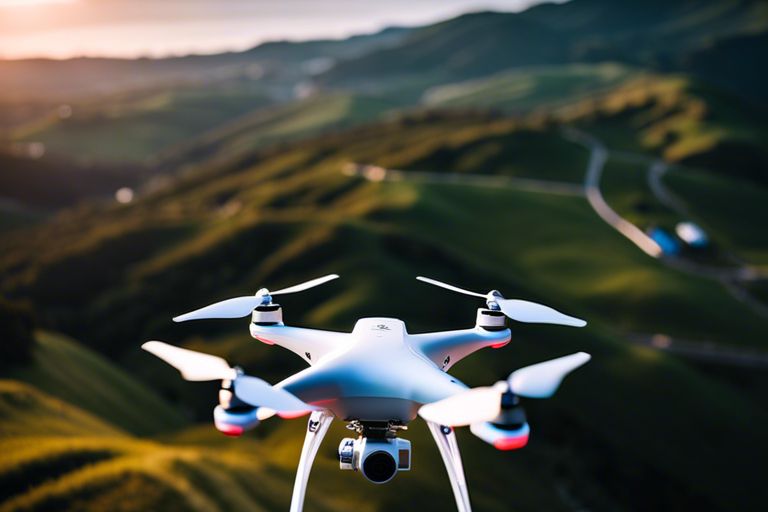
Practical Application and Techniques
Despite the small size of drones, they have become powerful tools for capturing stunning aerial footage. With the help of ND filters, drone cinematography can reach new heights by enhancing the quality of the footage. Understanding how to apply ND filters correctly and employing specific techniques can make a significant difference in achieving cinematic results.
Installation of ND Filters on Drones
Application of ND filters on drones is a straightforward process but requires attention to detail. Most drones have a specially designed camera gimbal that allows for easy attachment of ND filters. Simply line up the threads on the filter with those on the camera lens, twist it on gently, and ensure it is securely attached to prevent any movement or vibration during flight.
It is essential to choose the right strength of ND filter based on the lighting conditions to avoid overexposure or underexposure in your footage. Experiment with different filters to find the ideal one for the specific lighting environment you are filming in.
Tips for Achieving Cinematic Footage with ND Filters
To achieve cinematic footage with ND filters, it is crucial to pay attention to composition and movement. Incorporate dynamic shots such as tracking shots or revealing shots to add visual interest to your footage. Experiment with different speeds and angles to create engaging sequences that draw the viewer in.
- Use ND filters to create motion blur in your footage, giving it a more cinematic look.
- Experiment with different filters to find the perfect balance between exposure and motion blur.
Techniques play a vital role in enhancing your drone cinematography with ND filters. Understanding how to utilize filters effectively can elevate the quality of your footage and create visually appealing results that stand out.

Advanced Considerations
Your drone cinematography can be taken to the next level by considering some advanced factors.
-
Dealing with Varying Light Conditions
Challenge Solution Harsh sunlight causing overexposure Using ND filters with higher stops Low light situations leading to grainy footage Selecting lower stop ND filters
Dealing with Varying Light Conditions
On any given shooting day, you may encounter different light conditions that can impact the quality of your drone footage. To address this, it’s important to have a range of ND filters with varying stops in your kit. When the sunlight is harsh, opt for ND filters with higher stops to avoid overexposure. Conversely, in low light situations, using lower stop ND filters can help maintain the clarity of your footage without introducing unwanted noise.
Combining ND Filters with Other Cinematic Tools
Lighting is a crucial aspect of cinematography, and ND filters play a key role in controlling the amount of light that enters your camera lens. To elevate your drone cinematography further, consider combining ND filters with other cinematic tools such as gimbals, drones with adjustable settings, and color grading techniques. By using ND filters in conjunction with these tools, you can achieve professional-looking footage with enhanced clarity and dynamic range.
Varying the intensity of your ND filters based on the specific requirements of each shot can help you achieve consistent and visually appealing results. Experiment with different combinations of ND filters and cinematic tools to discover the optimal settings that suit your creative vision and filming style.
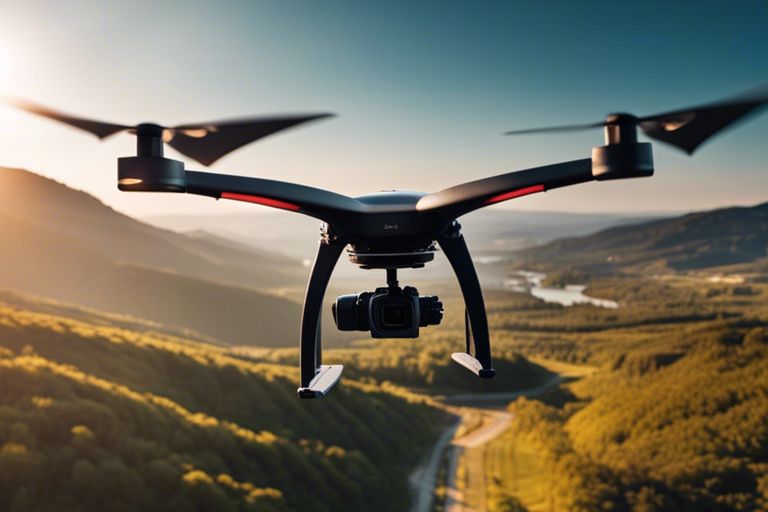
Final Words
Taking this into account, ND filters are essential tools for enhancing your drone cinematography by allowing you to have more control over your camera settings and capturing stunning footage. Understanding how ND filters work, the different types available, and when to use them will greatly improve the quality of your videos and photos. By investing in a set of ND filters and mastering their usage, you can elevate your drone cinematography to new heights and create professional-looking visuals that will impress your audience. So, don’t hesitate to experiment with ND filters and discover the difference they can make in your aerial photography and videography endeavors.
